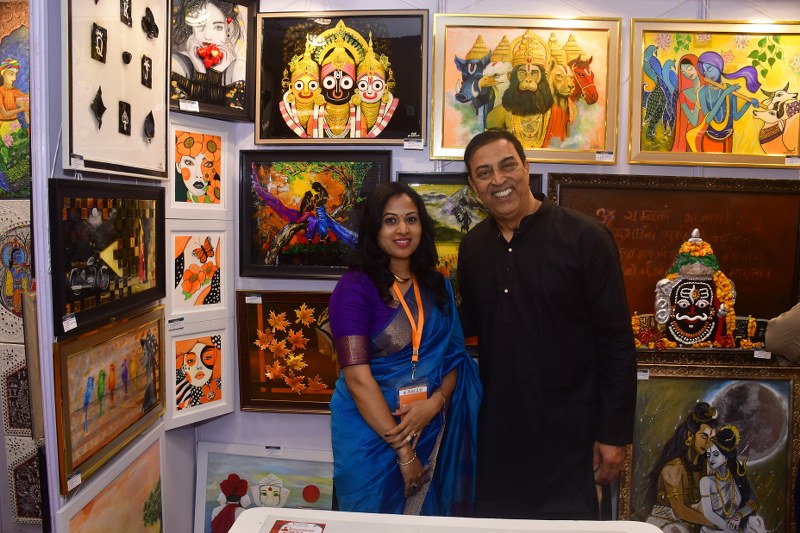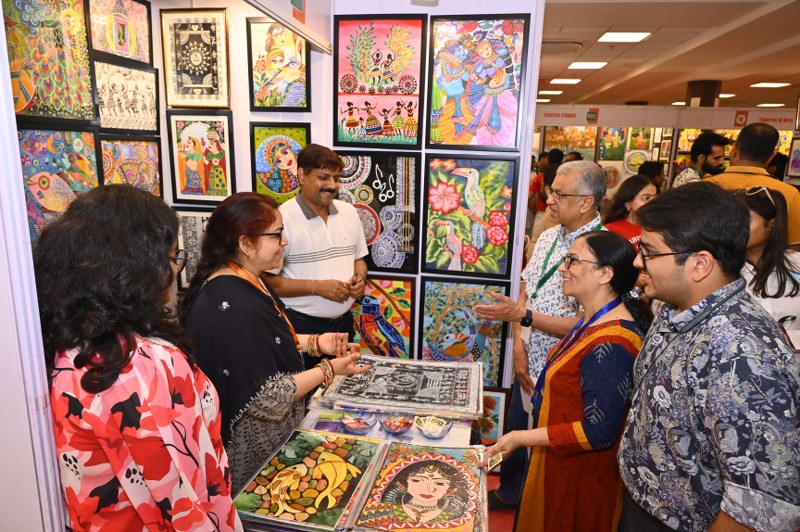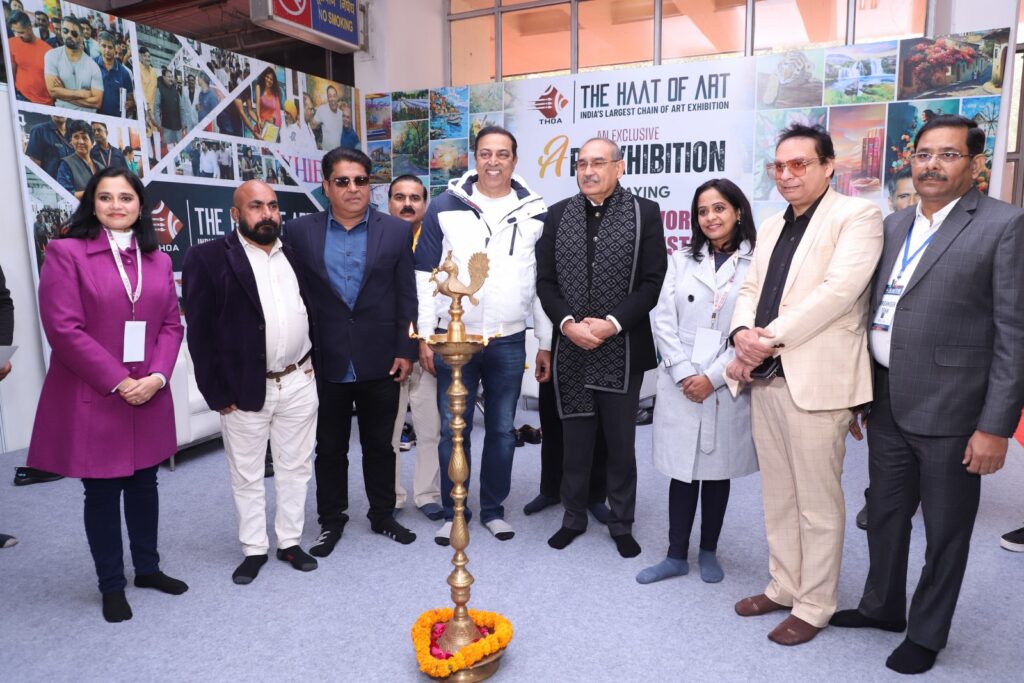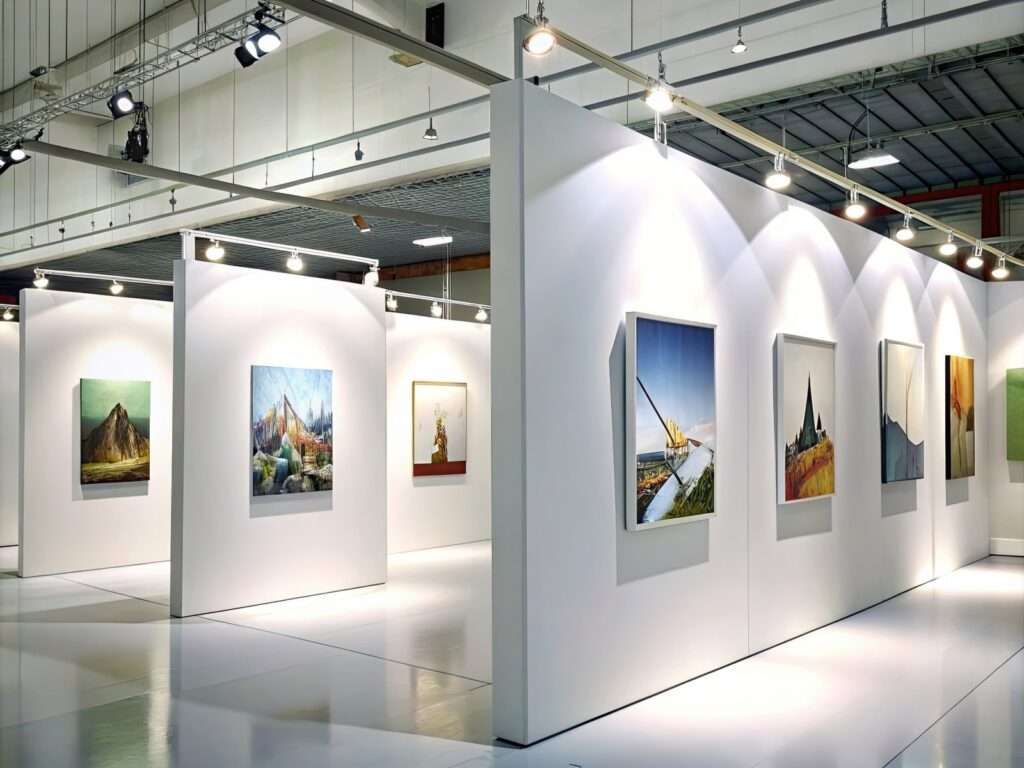Indian art is a vibrant reflection of the country’s diverse culture, history, and creativity. Spanning centuries, it encompasses a range of styles and mediums, including painting, sculpture, architecture, and textiles. Indian art tells stories of mythology, spirituality, daily life, and the evolving ethos of society.

The Origins of Indian Art
Indian art dates back to prehistoric times, with the earliest examples found in the Bhimbetka rock shelters in Madhya Pradesh. These cave paintings, over 10,000 years old, depict scenes of hunting, dancing, and rituals. As civilization progressed, so did the complexity and diversity of artistic expression.
Early Civilizations
- Indus Valley Civilization: One of the earliest examples of urban culture, this period (circa 3300–1300 BCE) produced intricate seals, pottery, and sculptures. The famous Dancing Girl statue is a testament to the advanced artistry of the time.
- Vedic and Post-Vedic Periods: This era saw the emergence of religious art, with an emphasis on symbolism and motifs linked to Hinduism and Buddhism.
Religious and Spiritual Influence
Religion has been a profound influence on Indian art, shaping its themes, styles, and purpose.
Buddhist Art
The Mauryan Empire (322–185 BCE) was a golden era for Buddhist art. Emperor Ashoka commissioned numerous stupas and pillars adorned with intricate carvings. The Ajanta and Ellora caves are prime examples of this tradition, showcasing exquisite frescoes and sculptures.
Hindu Art
Hindu temples from the Gupta period (320–550 CE) onwards became canvases for artistic expression. Temples like Khajuraho and Konark are masterpieces of Hindu art, with intricate carvings that narrate mythological stories and celebrate life.
Islamic Influence
The arrival of Islamic rulers introduced new styles, such as Persian-inspired miniature paintings and Mughal architecture. The Taj Mahal, an epitome of Mughal artistry, stands as a symbol of this fusion of cultures.
Traditional Indian Art Forms
Indian art is renowned for its variety, with each region contributing unique styles and techniques.
Paintings
- Madhubani (Bihar): Known for its vibrant colors and geometric patterns, this folk art often portrays nature and mythology.
- Warli (Maharashtra): Created by tribal communities, these paintings use simple forms to depict scenes of daily life.
- Pattachitra (Odisha): A traditional scroll painting that narrates mythological tales, it is characterized by intricate detailing.
- Tanjore (Tamil Nadu): Rich in color and adorned with gold foil, these paintings often depict deities.
Textiles
- Phulkari (Punjab): A form of embroidery that tells stories through vibrant patterns.
- Kalamkari (Andhra Pradesh): Hand-painted or block-printed textiles with mythological themes.
- Chikankari (Lucknow): Delicate hand embroidery on muslin and cotton fabrics.
Indian Sculptures and Architecture
Indian sculptures and architecture are monumental in both scale and significance. From the towering temples of South India to the sandstone forts of Rajasthan, these creations are a blend of aesthetics and engineering.
Iconic Examples
- Sanchi Stupa: A Buddhist relic built during Ashoka’s reign.
- Khajuraho Temples: Famous for their erotic sculptures and architectural precision.
- Ellora and Ajanta Caves: A UNESCO World Heritage site showcasing rock-cut artistry.
Modern Indian Art
The colonial period marked a turning point in Indian artwork, introducing Western styles and techniques. Artists like Raja Ravi Varma merged traditional Indian themes with European realism, paving the way for modern Indian artwork.

Contemporary Scene
Modern art has expanded its horizons, with artists exploring new mediums and global themes. Notable figures include:
- M.F. Husain: Known for his bold and modern interpretations of Indian culture.
- Tyeb Mehta: A pioneer of abstract art in India.
- Anish Kapoor: An internationally acclaimed sculptor.
The Role of Indian Art in Society
Indian art is more than just aesthetic; it plays a crucial role in preserving culture and fostering community. Folk art forms like Rangoli and Kolam are integral to festivals and celebrations, while traditional crafts sustain local economies.
Art in the Digital Age
Technology has revolutionized the way we experience art. Virtual galleries and online exhibitions are making Indian art accessible to a global audience. This digital shift is also empowering young artists to showcase their talent beyond physical boundaries.
Indian Art as an Investment
The value of Indian artwork has soared in recent years, making it a viable investment. Art auctions frequently feature works by Indian masters that fetch record prices, reflecting their cultural and monetary significance.
Preserving the Legacy
Efforts are being made to preserve India’s artistic heritage through museums, exhibitions, and educational programs. Organizations and initiatives are working to revive dying art forms and support artisans.
Visiting Indian Art Galleries
Exploring Indian art galleries is a must for art enthusiasts. Some notable galleries include:
- National Gallery of Modern Art (Delhi, Mumbai, Bangalore): A repository of modern and contemporary art.
- Jehangir Art Gallery (Mumbai): A platform for emerging and established artists.
- Indian Museum (Kolkata): One of the oldest museums in Asia, showcasing an extensive art collection.
Conclusion
Indian art is a living testimony to the country’s rich history and cultural diversity. Its evolution from ancient times to the contemporary era reflects the dynamic spirit of India. Whether through traditional crafts or modern installations, Indian art continues to inspire, educate, and connect people across the globe.
Exploring art is not just about admiring its beauty; it’s about understanding the soul of a nation. From local galleries to international platforms, Indian art stands as a beacon of creativity and cultural pride.



